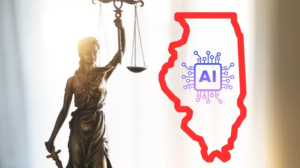
Duane Morris Takeaway: This week’s episode of the Class Action Weekly Wire features Duane Morris partner Jennifer Riley and special counsel Rebecca Bjork with their discussion of key sanctions rulings in the past 12 months of class action litigation.
Check out today’s episode and subscribe to our show from your preferred podcast platform: Spotify, Amazon Music, Apple Podcasts, Samsung Podcasts, Podcast Index, Tune In, Listen Notes, iHeartRadio, Deezer, and YouTube.
Episode Transcript
Jennifer Riley: Thank you for being here again for the next episode of our weekly podcast, the Class Action Weekly Wire. I’m Jennifer Riley, partner at Duane Morris, and joining me today is special counsel Rebecca Bjork. Thank you so much for being on the podcast today, Rebecca.
Rebecca Bjork: Great to be here, Jen. Thank you for having me.
Jennifer: Today we have a little different topic – we are discussing significant decisions granting or denying sanctions in class action cases. Rebecca, what are some of the reasons that a court could grant sanctions in a class action?
Rebecca: Sanctions are usually issued in response to a party violating court procedures, or abusing the judicial process in some way. They are more simply thought of as penalties. In civil cases, sanctions are typically in the form of a monetary fine. But the most extreme sanction imposed in civil cases, including class actions, can be dismissal with prejudice of the filing party’s complaint or dismissal of the answer of the responding party. In either of those cases the sanctioned party would have no further recourse available, and the case would be over with judgment entered against them.
Jennifer: Given the cost of defending a class action, corporate defendants also sometimes move for sanctions if the claims are frivolous. For instance, the Sixth Circuit issued a ruling on sanctions in Garcia, et al. v. Title Check, LLC. In that case, the plaintiff filed a class action against the defendant alleging that its buyers fee violated the Michigan General Property Tax Act. In that one, the district court had dismissed the plaintiffs’ claims, finding that the fee was not prohibited by the statute, and then the defendant moved for sanctions against the plaintiffs’ attorneys on the ground that the case was frivolous and had forced the defendant to incur unnecessary legal fees. There the district court granted the motion for sanctions, and ordered the plaintiffs’ counsel to pay attorneys’ fees and costs north of $73,000. On appeal, the Sixth Circuit then affirmed the district court’s ruling in that when the plaintiffs argued that the district court erred in imposing the sanctions because the legal issues in the case were debatable, and because the district court misunderstood Michigan law.
The Sixth Circuit, however, agreed with the district court’s conclusion that the plaintiffs’ counsel had unreasonably pursued a frivolous claim based on an implausible interpretation of the statute. The Sixth Circuit found the plaintiffs should have known that their claims lacked merit. It also rejected the plaintiffs’ argument that sanctions should have been limited to the specific filings relating to the unnecessary claims. Instead, the Sixth Circuit held that the entire action was frivolous and vexatious. For these reasons it affirmed the district court’s ruling, and imposed the sanction on the plaintiffs’ counsel.
Rebecca: A really interesting case involving sanctions. Last year in a class action was AFL-CIO v. LSRI,LLC, where the court entered more serious sanctions. The plaintiffs were two AFL-CIO locals, Local 846 and Local 847, and their employee benefit plans, and the plaintiffs filed a class action alleging that the defendant failed to pay contributions for workers covered under a labor contract for a project involving SpaceX in Cape Canaveral, Florida, in violation of ERISA. Plaintiffs further asserted, and this is important for the sanctions piece of this case, that the actual amounts that plans were owed could not be determined without an audit of the defendant’s records. So the sanctions issue arose in the case after the defendant failed to appear after being served with a complaint, and the court subsequently entered a default order against it. But then the court also ordered the defendant to submit its books, ledgers, payroll records, bank statements, other financial documents reflecting the hours worked by the defendant’s employees. The defendant did not comply with this order, so the plaintiffs moved for an order holding the defendant in contempt of court. After the defendant failed to appear at the hearing on the motion for contempt, the court granted the motion finding the defendant in contempt, and further imposed a compliance fine of $200 per day, and in addition awarded the plaintiffs’ attorneys’ fees and costs. Subsequently, the plaintiffs had to file another motion – and this is surprising – they sought the arrest of the defendant’s principal as a last resort, to obtain compliance with the court’s orders. The court concluded that the monetary sanctions had not been effective in inducing the defendant to comply, and therefore determined that the arrest of the defendant’s principal was appropriate, and so, for these reasons, the court ordered the arrest of the defendant’s principal for civil contempt.
Jennifer: That’s a great example. Rebecca. Sanctions are also deemed warranted in some cases where a party is not forthright with its discovery responses. A great example of that is in In Re Keurig Green Mountain Single-Serve Coffee Antitrust Litigation, where death knell sanctions were imposed. The plaintiffs filed a class action alleging that the defendants violated antitrust laws by operating a monopoly, by using exclusive dealings and exclusionary product design. The plaintiffs filed a motion for sanctions asserting that the defendant Winn Dixie failed to respond to discovery. The court granted the motion, and ordered Winn Dixie to pay attorneys’ fees and costs. The court found that Winn Dixie repeatedly and consciously failed to comply with three court orders indicating that lesser sanctions would not be effective.
Rebecca: Right. Federal courts have wide discretion in calibrating sanctions orders. In 2023, a ruling in Lopez, et al. v. Fun Eats & Drinks, LLC demonstrated how sanctions can include civil contempt orders. Plaintiffs moved for contempt and an award of attorneys’ fees after the defendants violated multiple court orders. The court granted that motion, and had previously entered a final judgment against the defendants, and awarded the plaintiffs more than $538,000, plus attorneys’ fees. So the plaintiffs moved for additional attorneys’ fees, and the defendants failed to respond to the motion. The plaintiffs thereafter served post judgment discovery on the defendants, and they again failed to respond. Plaintiffs moved to compel discovery, and the defendants counsel responded by moving to withdraw as counsel of record due to the defendant’s failure to communicate with them regarding the post judgment, discovery. The court ended up denying the defendant’s motion, and granted the plaintiff’s motion to compel, and the defendants once again failed to respond, and the plaintiffs then resorted to filing their contempt motion. The court granted the motion, holding the defendants in contempt for the refusal to comply with the court’s orders and respond to the post judgment discovery, and also held the defendant’s attorney in civil contempt for his failure to appear at the show cause, hearing, as ordered by the court. So that in the end the court granted the plaintiff’s motion, and ordered the defendants and defendants counsel to pay for the plaintiff’s additional attorneys, fees in the amount of over $5,000.
Jennifer: Thanks, Rebecca, that is a great example as well. Were there any notable rulings that you can think of where sanctions were denied over the past year?
Rebecca: Well, actually, most times sanctions motions are denied, and that is simply because the moving party has not been able to demonstrate bad faith or willfulness by the other party. One example is Colucci, et al. v. Health First, Inc., where the plaintiffs allege anticompetitive practices in the acute healthcare market against the defendant. The court denied the motion for class certification due to lack of standing to represent the class, and the parties later stipulated to dismiss the case. So after that the defendant sought sanctions under Rule 11, arguing that the plaintiff’s counsel had no factual or legal support for asserting standing in the first place. This court denied the motion for sanctions, stating that the arguments in support of class certification were not lacking in evidentiary or legal support sufficient to justify an order granting sanctions, and the defendant also failed to demonstrate any improper purpose in prosecuting the case by the plaintiff’s attorneys.
Jennifer: Thanks, Rebecca, great insights and analysis. I know that these are only some of the cases that had interesting rulings on motions for sanctions over the past 12 months, and that we are apt to see some notable rulings over the remainder of 2024 as well. Rebecca, thanks for being here and to our audience listeners – thank you so much for tuning in.
Rebecca: Thank you, Jen.











